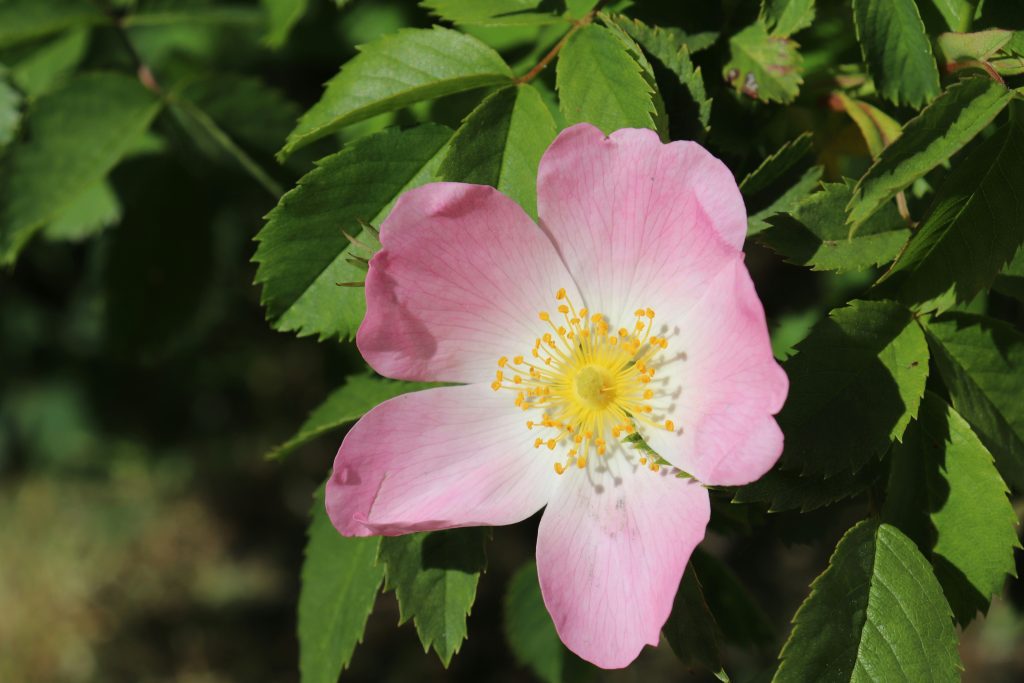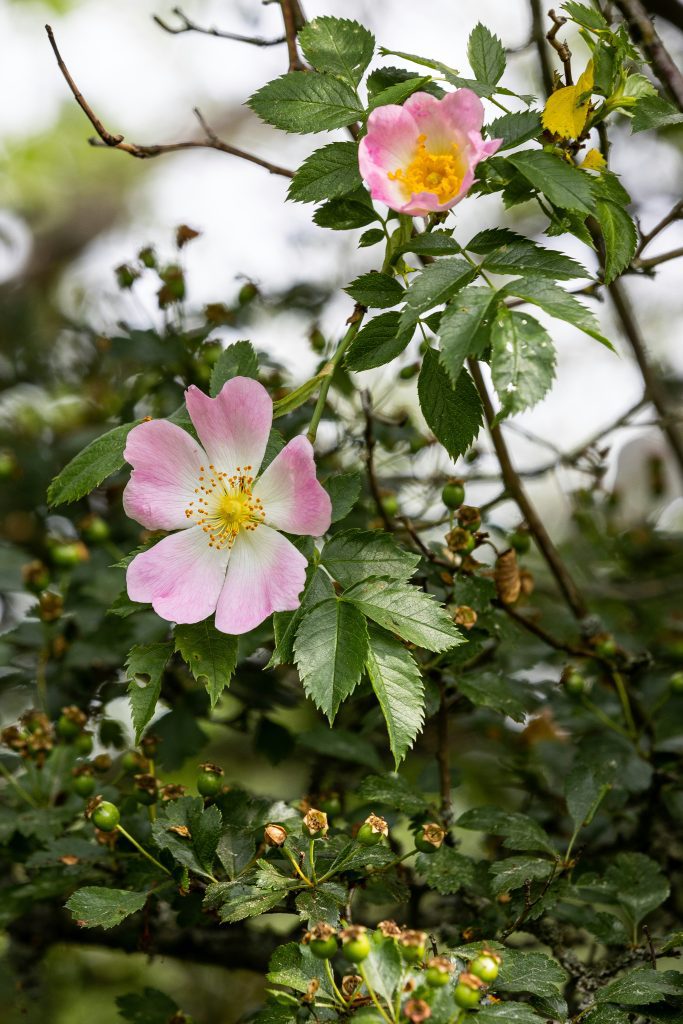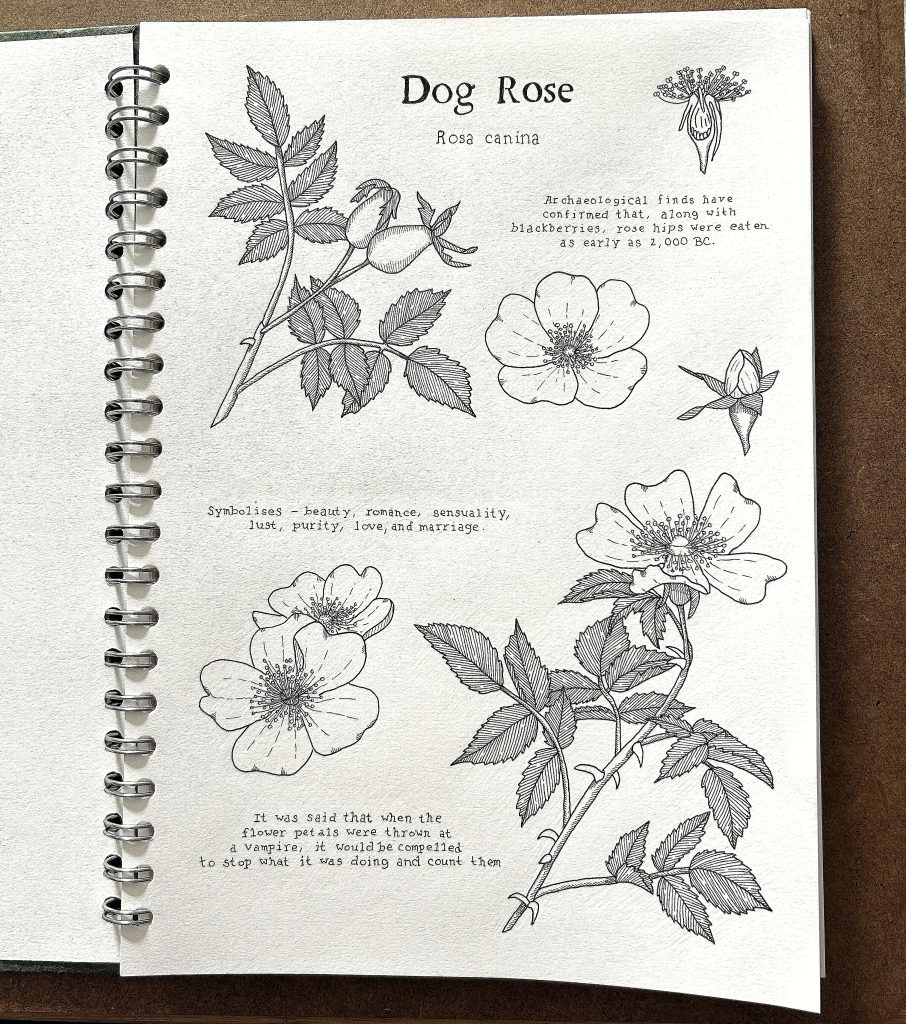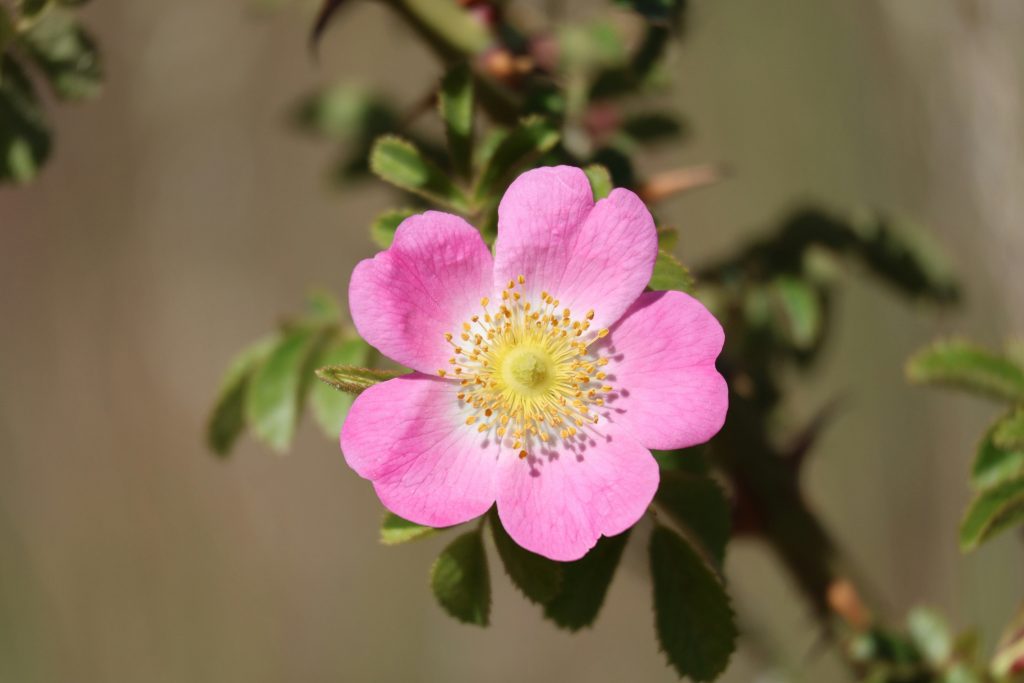Your basket is currently empty!
The Dog Rose
The Dog Rose is a beautiful wildflower that is quite a common sight in June and July in hedgerows and woodlands, it’s soft pink and white flowers often adding some contrast amongst the green further up in the hedge away from the other pretty wildflowers on the ground.

It is the most common of the native wild roses in the UK but it can be quite easy to confuse it with our other wild roses sometimes.
Dog Rose Folklore
Medieval growers and pharmacists sometimes used an old country riddle to identify the Dog Rose:
“On a summer’s day, in sultry weather,
Five brethren were born together.
Two had beards and two had none,
And the other had but half a one”
This riddle refers to the five sepals of the Dog Rose, you can find this hidden underneath the petals. Two have hairs on both edges or sides, two are smooth with no hair at all, and one has hair on one side only.

It is said that it was named the Dog rose as people once believed that the roots would help if you had been bitten by a rabid dog.
It is also knows as the Briar Rose or the Dog Briar due to it’s prickles.

If you ever find yourself being chased by a vampire then keep an eye out for Dog Roses. There is some folklore that says that if the petals of the Dog Rose are thrown at a vampire it will have to stop and count them all, which at least gives you a bit of a head start!
It was also common, when someone believed to be a vampire was buried, to plant a dog rose on the grave to prevent them from rising again.

The Dog Rose is said to symbolise love, beauty, romance, sensuality, lust, healing, and protection
Rosehips
In the Autumn the plant will be covered with bright red rosehips which birds and small mammals love to eat. They are a good source of vitamin C and were once used to make a medicinal syrup, even today they can be collected to make sweet Rosehip Syrup and Rosehip Jelly. There is evidence to suggest that Rosehips along with Blackberries were eaten as early as 2000 BC.

Rosehips were once thought to provide protection from sorcery and witchcraft with might be why they are often seen in medieval architecture.
I’ll be adding more to this post as and when I find any interesting little bits of information or when I think of something I’d like to add.
